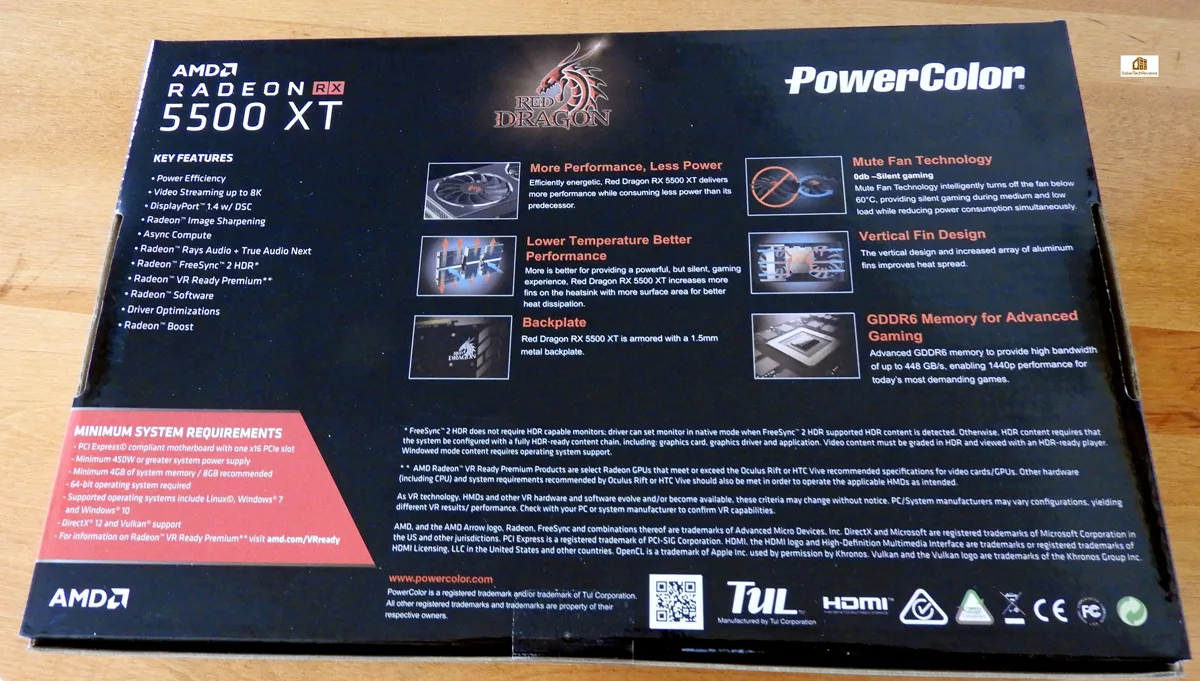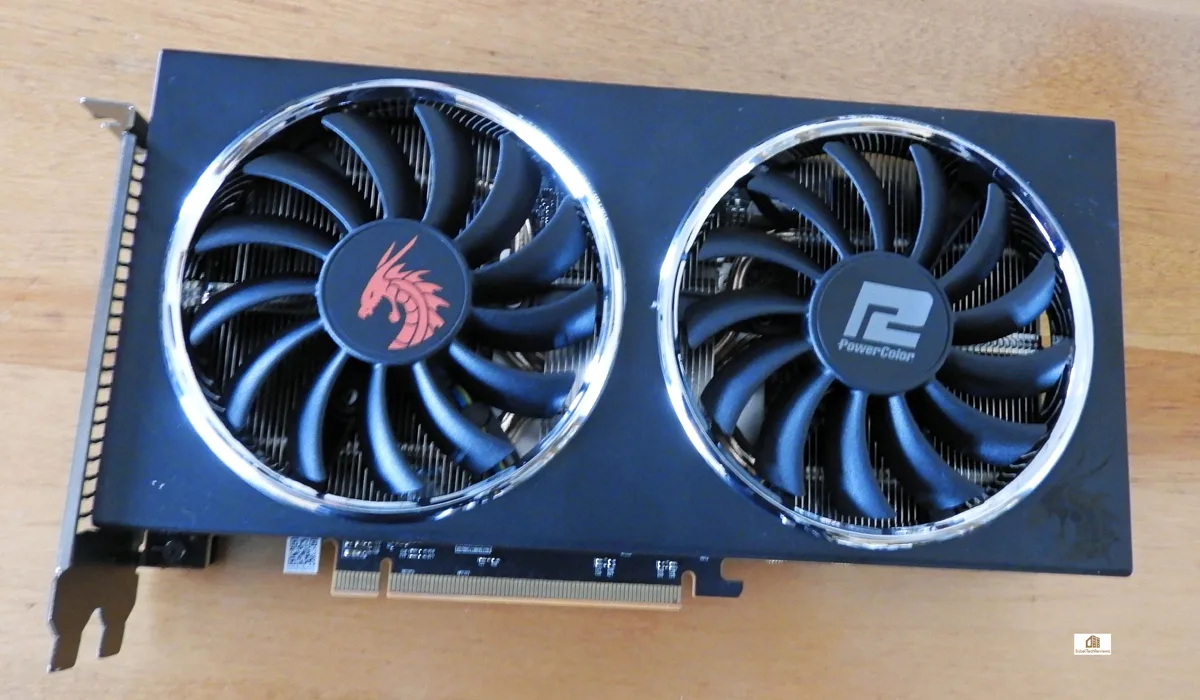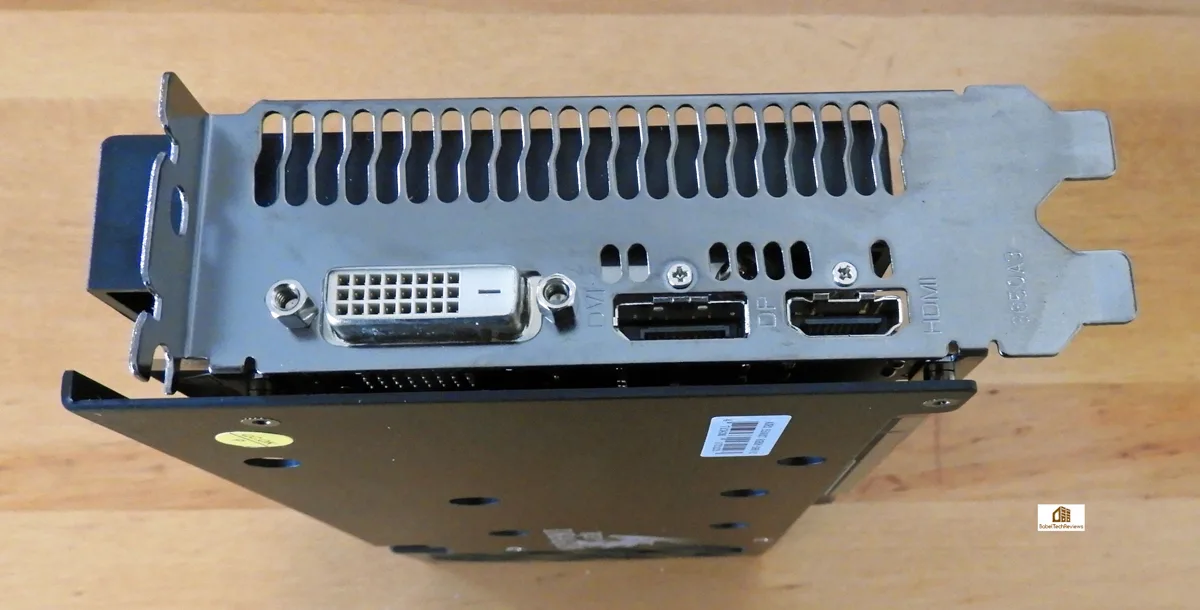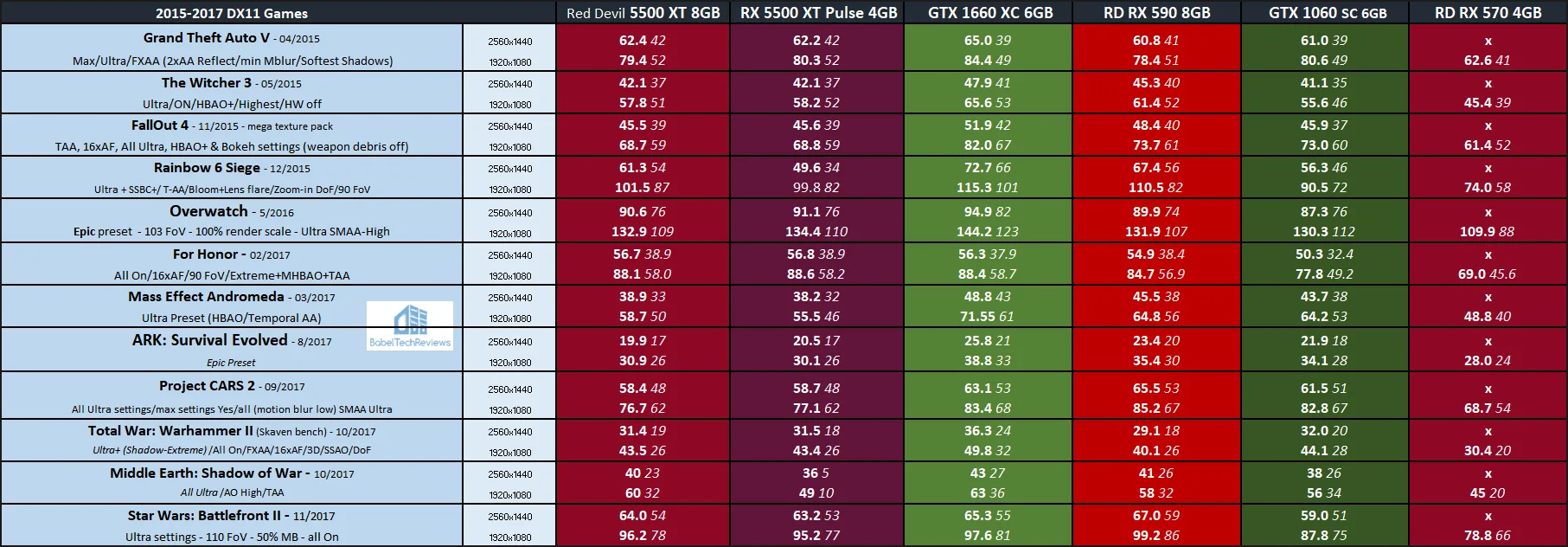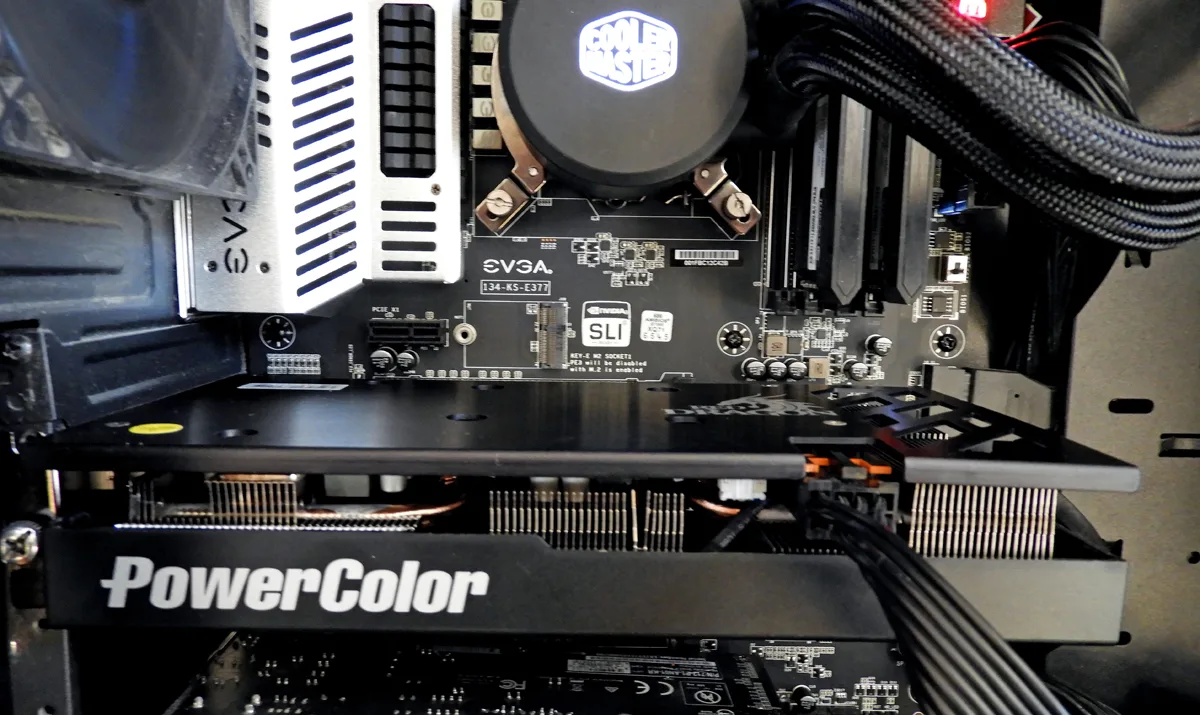The PowerColor Red Dragon RX 5500 XT 8GB vs. the Sapphire RX 5500 XT 4GB Pulse with 46 Games
BTR received a PowerColor Red Dragon RX 5500 XT 8GB ($199 – Updated by PowerColor to $219.99) review sample on Friday, and we have benchmarked it using 46 games versus the ($169) Sapphire RX 5500 XT Pulse 4GB. Although the Red Dragon RX 5500 XT 8GB is designed for High/Ultra 1080P, BTR’s 46 game benchmarks were run at Ultra 1920×1080 and at 2560×1440 to stress it beyond its limits.
We already posted our Sapphire RX 5700 XT Pulse 4GB OC review earlier this morning and we will not repeat all the same information here. We are benchmarking the same cards, but now with the addition of the Red Dragon RX 5500 XT 8GB we are placing a special emphasis on comparing the performance of 4GB vs. 8GB of vRAM of similarly clocked RX 5500 XTs.

The PowerColor Red Dragon RX 5500 XT 8GB
Although there is no AMD reference design, the Red Dragon RX 5500 XT 8GB shares the same specifications including the 1845MHz maximum Boost clock, but its game clock is set 20MHz higher at 1437MHz which also matches its core clocks with the Sapphire RX 5500 XT 4GB Pulse.
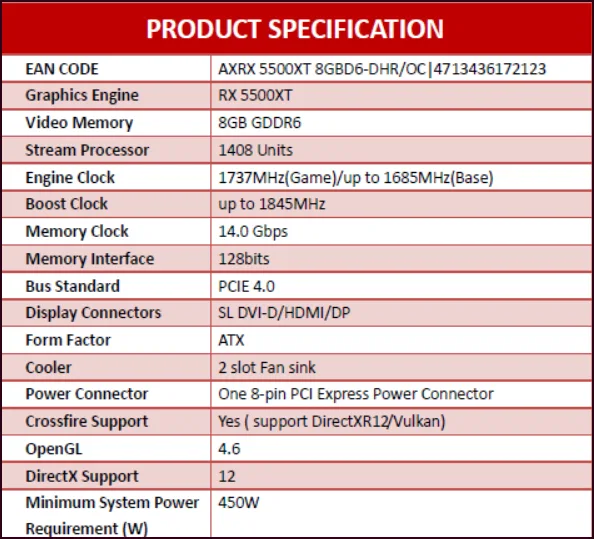
The specifications look good, it is fully featured, and the card looks awesome, so let’s unbox it and look more closely at it before we benchmark it.
Unboxing the Red Dragon RX 5500 XT 8GB
The Red Dragon RX 5500 XT 8GB comes in an small box that advertise its features. The Red Dragon is an 8GB RX 5500 XT built on 7nm using AMD’s latest RDNA architecture and it features 4.0 PCIe support, Fidelity FX and FreeSync 2.
The features and the minimum system requirements including the need for a 450W power supply are detailed on the back of the box. Power efficiency, 8K video streaming, and other Radeon key features are detailed.
Mute fan technology means the dual axial fans will come to a dead stop below 60℃ under a light gaming load providing silent gaming while reducing power consumption. PowerColor stresses that lower temperatures mean better performance and we shall see that it runs almost 10C cooler than the Sapphire RX 5500 XT Pulse. The cooling fan is equipped with two-ball bearings which increases longevity.
Opening the box we see a quick start guide.
The Red Dragon RX 5500 XT 8GB is a handsome card.
Turning it over, we see the Red Dragon logo on a solid metal 1.5mm backplate that protects the PCB against flexing and prevents damaging the traces.
Looking at the Red Dragon RX 5500 XT 8GB from one edge we see the large heatsink with many dense fins that extend for much of the length of the PCB. Note that one 8-pin PCIe connector is required unlike the 6-pin+8-pin connectors required for the Red Devil RX 590.
We see the heatpipes connecting the heatsinks.
On the one end, the connectors consist of one DisplayPorts, one DVI connector, and a HDMI connector. We don’t like this setup as well as the cards that use three DisplayPort connectors which is better for VR setups.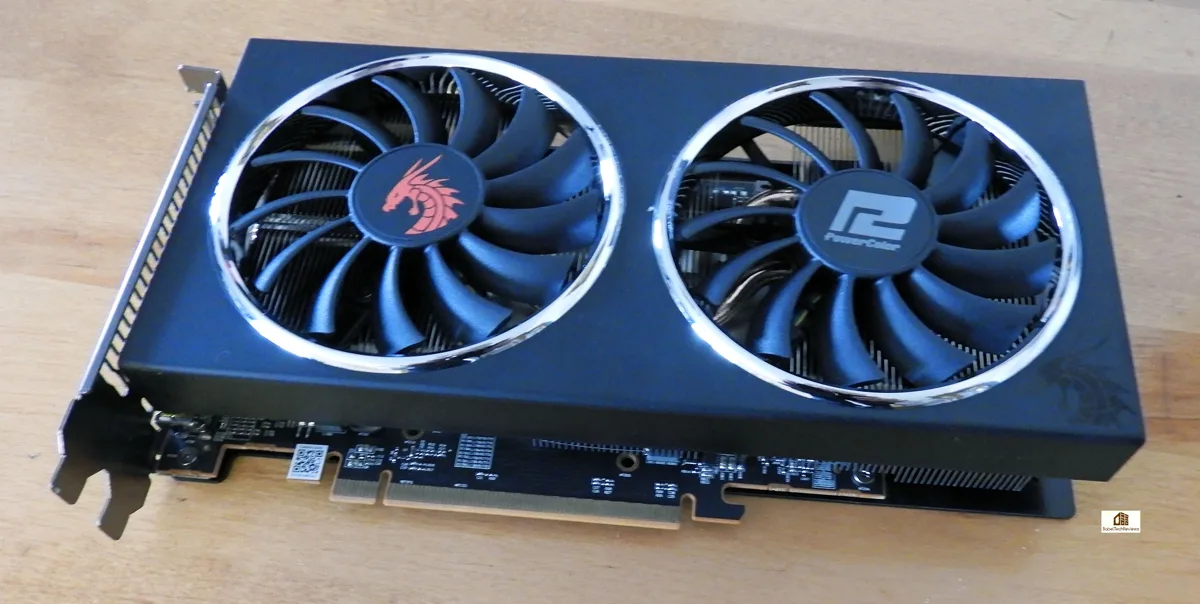
The Red Dragon RX 5500 XT 8GB looks great from any angle. But before we explore overclocking and then performance testing, let’s take a closer look at our test configuration.
Test Configuration – Hardware
- Intel Core i7-8700K (HyperThreading and Turbo boost is on to 4.8GHz for all cores; Coffee Lake DX11 CPU graphics).
- EVGA Z370 FTW motherboard (Intel Z370 chipset, latest BIOS, PCIe 3.0/3.1 specification, CrossFire/SLI 8x+8x), supplied by EVGA
- T-FORCE 16GB DDR4 (2x8GB, dual channel at 3866 MHz), supplied by Team Group
- Red Dragon RX 5500 XT 8GB at Red Dragon clocks, on loan from PowerColor
- Sapphire RX 5500 XT Pulse OC 4GB, on loan from Sapphire
- EVGA GTX 1660 XC 6GB at EVGA factory settings, on loan from EVGA
- Red Devil RX 570 4GB, at Red Devil factory overclocked settings, on loan from PowerColor
- EVGA GTX 1060 SC 6GB, factory SC clocks, on loan from EVGA
- 2 x 480GB Team Group SSDs – one for AMD, and one for NVIDIA
- 1.92TB San Disk enterprise class SSD
- 2TB Micron 1100 enterprise class SSD
- 500GB Vulkan SSD, supplied by Team Group
- Seasonic 850W Gold Focus power supply unit
- Cooler Master 240mm CPU water cooler
- EVGA Nu Audio PCIe soundcard, supplied by EVGA
- Edifier R1320T Active speakers
- EVGA DG-77, mid-tower case supplied by EVGA
- LG 43″ HDR 4K TV
- Monoprice Crystal Pro 4K
Test Configuration – Software
- GeForce 436.48 drivers used for the GTX 1060 SC. Game Ready 441.41 drivers are used for the GTX 1660. See NVIDIA Control Panel image below.
- AMD Adrenalin Software 19.12.2 (press drivers) is used for the Red Dragon RX 5500 XT 8GB, the RX 5500 XT Pulse 4GB, the Red Devil RX 590 8GB and the RX 570 4GB. See the AMD Control Panel image below.
- VSync is forced off.
- AA enabled as noted in games; all in-game settings are specified with 16xAF always applied
- Gaming results show average frame rates in bold including minimum frame rates shown on the chart next to the averages in a smaller italics font where higher is better. Games benched with OCAT show average framerates but the minimums are expressed by the 99th percentile frametime in ms where lower numbers are better.
- Highest quality sound (stereo) used in all games.
- Windows 10 64-bit Home edition. DX11 titles are run under DX11 render paths. DX12 titles are generally run under the DX12 render path unless performance is lower than with DX11; and Borderlands 3, Total War Warhammer II, and Hitman 2 are tested on DX11 and on DX12. Five games use the Vulkan API.
- Latest DirectX
- All 46 games are patched to their latest versions at time of posting.
- The Adrenalin 2020 control panel is used to set Radeon options
- The NVIDIA control panel is used for GeForce settings
- OCAT, latest version
- Fraps, latest version
- Afterburner, latest non-beta version
- Unigine Heaven 4.0 benchmark
46 PC Game benchmark suite & 3 synthetic tests
Synthetic
- Firestrike – Basic & Extreme
- Time Spy DX12
- Superposition
DX11 Games
- Grand Theft Auto V
- The Witcher 3
- Fallout 4
- Rainbow Six Siege
- Overwatch
- For Honor
- Mass Effect: Andromeda
- ARK: Survival Evolved
- Project CARS 2
- Total Wars: Warhammer II
- Middle Earth: Shadow of War
- Star Wars: Battlefront II
- Monster Hunter: World
- Kingdom Come: Deliverance
- Final Fantasy XV
- Far Cry 5
- Conan Exiles
- Assassin’s Creed: Odyssey
- Call of Duty: Black Ops 4
- Hitman 2
- Just Cause 4
- Resident Evil 2
- Anthem
- FarCry New Dawn
- Devil May Cry 5
- Borderlands 3
- Destiny 2 Shadowkeep
- Ghost Recon Breakpoint
- The Outer Worlds
DX12 Games
- Civilization VI
- Sniper Elite 4
- Forza 7
- Total War: Warhammer II
- Warhammer: Vermintide 2
- Shadow of the Tomb Raider
- Hitman 2
- Battlefield V
- Metro Exodus
- Tom Clancy’s The Division 2
- Anno 1800
- F1 2019
- Control
- Gears 5
- Borderlands 3
- Call of Duty Modern Warfare
Vulkan Games
- DOOM
- Strange Brigade
- World War Z
- Wolfenstein: Youngblood
- Red Dead Redemption 2
AMD Adrenalin Control Center Settings
All AMD settings are set so as to be apples-to-apples when compared to NVIDIA’s control panel settings – all optimizations are off, Vsync is forced off, Texture filtering is set to High, and Tessellation uses application settings.

We pick the above Custom Global Performance settings for our benchmarking which has to be precisely repeatable, so Surface Format and other optimizations are disabled. As above, Anisotropic Filtering is disabled by default but we always use 16X for all game benchmarks.
NVIDIA Control Panel settings
Here are the NVIDIA Control Panel settings that match AMD’s settings.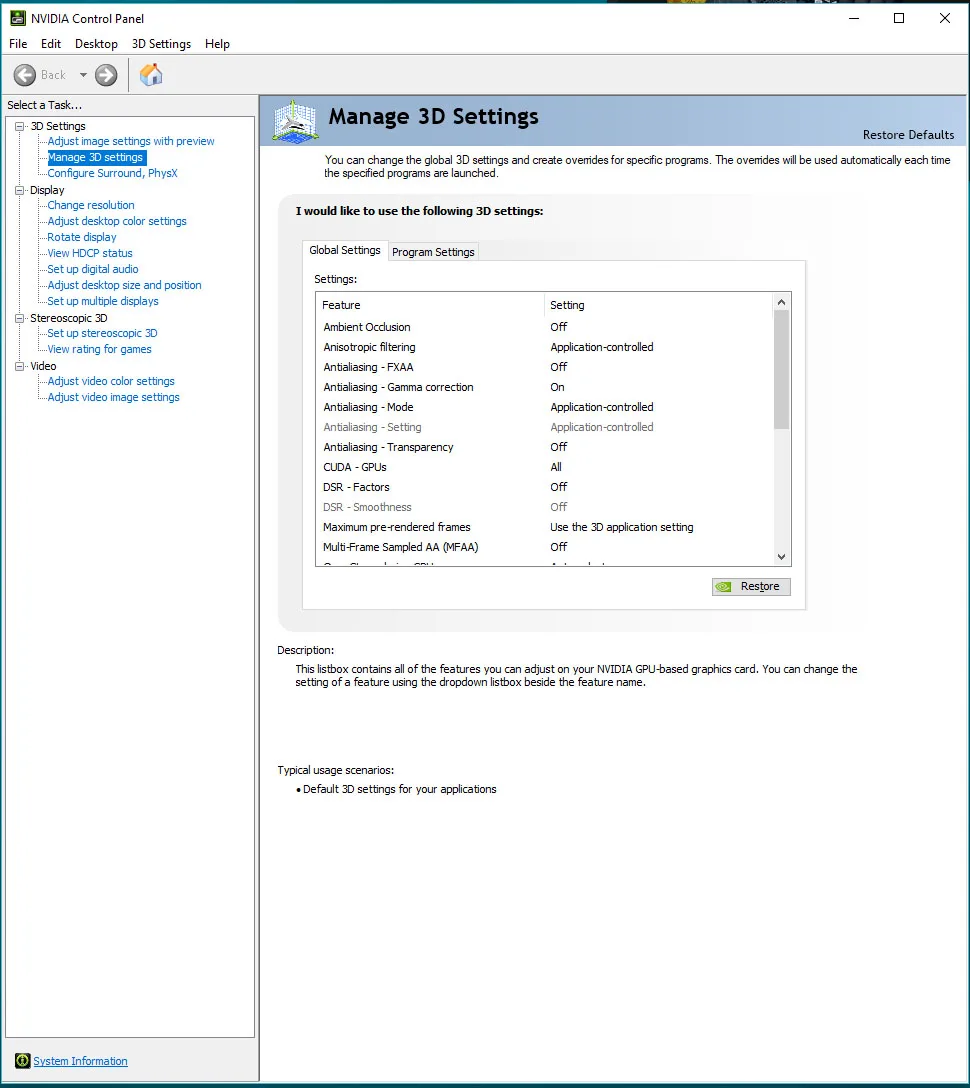
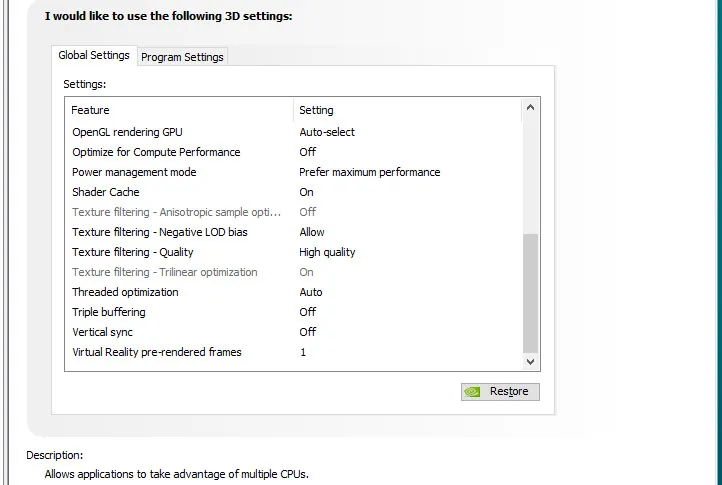 We did not adjust any card’s Power and Temperature limits since it does not benefit low-power cards.
We did not adjust any card’s Power and Temperature limits since it does not benefit low-power cards.
Let’s check out overclocking, temperatures, and noise next.
Overclocking, temperatures & noise
The Red Dragon RX 5500 XT 8GB is a low-power and quiet card even when overclocked. We could not hear it over the fans of our PC even when it ramps up, unlike with the Red Devil RX 590 or even the RX 570. Because of extreme time pressure, we will spend more time manually overclocking and testing performance in a follow-up overclocking showdown.
Here is Heaven 4.0 running at stock clocks which allowed the Boost to stay locked between 1828MHz and 1838MHz which is well above AMD’s typical game clock of 1717MHz and very slightly higher than the Sapphire Pulse XT GPU clocks. Under a heavy gaming load, we never saw it hit AMD’s maximum boost clock of 1845MHz after it warmed up.
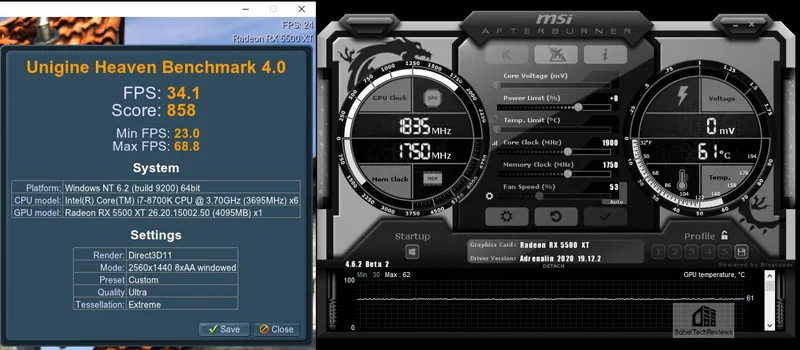 The card stayed cool generally at or below 61℃ even under a heavy load so its dual fans never became intrusive. The Red Dragon RX 5500 XT 8GB runs about 8-10℃ cooler than the Sapphire RX 5500 XT Pulse temperatures although we couldn’t hear either card over our PC’s cooling fans.
The card stayed cool generally at or below 61℃ even under a heavy load so its dual fans never became intrusive. The Red Dragon RX 5500 XT 8GB runs about 8-10℃ cooler than the Sapphire RX 5500 XT Pulse temperatures although we couldn’t hear either card over our PC’s cooling fans.
We will check performance compared with five other competing cards using 46 games while focusing on 4GB vs. 8GB performance, and then head for our conclusion.
Performance Summary Charts & Conclusion
Here are the performance results of 46 games and 3 synthetic tests comparing the PowerColor Red Dragon RX 5500 XT 8GB with the Sapphire RX 5500 XT Pulse 4GB. In addition, we compare their performance with the more expensive EVGA GTX 1660 XC 6GB, and also with the Red Devils RX 590 8GB and the RX 570 4GB, and the EVGA GTX 1060 SC 6GB. The highest settings are always chosen and the settings are listed on the charts. Although the Red Dragon RX 5500 XT is designed for High/Ultra 1080P, the benches were run at Ultra 1920×1080 and at 2560×1440 to really push the card well beyond its limits.
Most gaming results show average framerates in bold text, and higher is better. Minimum framerates are next to the averages in italics and in a slightly smaller font. The games benched with OCAT show average framerates but the .1 minimums are expressed by frametimes in ms where lower numbers are better. An “X” means the benches were not run and the RX 570 was only benchmarked at 1920×1080.
The first column is devoted to the PowerColor Red Dragon RX 5500 XT 8GB, and the Sapphire 5500 XT Pulse 4GB results are in the second. The third column represents the EVGA GTX 1660 XC 6GB, the fourth column shows the Red Devil RX 590, the fifth is the EVGA GTX 1060 SC 6GB, while the last column represents the Red Devil RX 570 4GB. Open each chart in a separate tab for the best viewing.
There may be issues with the Rockstar platform that prevented Red Dead Redemption 2 from running on GeForce cards. Another bug affects RX 5500 XT cards that prevents Control from launching in DX12 although it does not affect Polaris or GeForce cards.
We can see that the Sapphire RX 5500 XT 4GB falls extremely short in performance with games like Wolfenstein: Youngblood that are tested at Uber settings even at 1920×1080. Most of these issues can be attributed to the 4GB vRAM limitation of the Sapphire RX 5500 XT that is probably not optimized for Ultra settings. Ultra settings tend to use a lot of vRAM and we would suggest lowering the settings for the 4GB cards.
Our main emphasis in this review is comparing the two RX 5500 XTs and coming to a determination was to whether the 8GB card is worth the extra $30 over the 4GB card. In our opinion, yes.
The RX 5500 XTs do well against the competition, considering that the EVGA GTX 1660 XC costs $33 more than the Red Dragon RX 5500 XT 8GB and $63 more expensive than the Sapphire RX 5500 XT 4GB. But both RX 5500 XTs are much faster than either the Red Devil RX 570 (around $130) or the GTX 1060 6GB, and they put in a good showing against the power-hungry Red Devil RX 590 which is in the $180 to $200 plus price range.
Conclusion
The Red Dragon RX 5500 XT 8GB at $199* brings a higher level of performance than the $169 Sapphire RX 5500XT 4GB in modern demanding games even at Ultra 1080P. It would be an excellent upgrade from a RX 560/570 level of card. For older games, it would be OK for 1440P gaming although it would require lowering settings for some modern titles.
AMD brings some great new features with Adrenalin 2020 software that turns it into an all-in-one platform for launching games, streaming, and sharing. From what we can see without having a GTX 1650 Super to compare with, AMD brings a good $199 value with the Red Dragon RX 5500 XT 8GB. We would definitely pick a 8GB card over a 4GB card in the RX 5500 XT lineup for more longevity in playing at higher settings even at 1080P.
The PowerColor Red Dragon RX 5500 XT 8GB is a very handsome and solid modern card with improving performance potential for AMD gamers that will no longer happen with the older Polaris cards.
Red Dragon RX 5500 XT 8GB Pros
- The Red Dragon RX 5500 XT 8GB brings great new features at $199* and it’s faster than the RX 570 4GB or the GTX 1060 6GB and it is a wiser choice for Ultra 1080P gaming than any 4GB XT
- New RDNA architecture brings higher performance per clock and per watt
- Twenty new or updated features include anti-lag technology and Radeon Boost for competitive gamers and image sharpening for everyone
- The Red Dragon RX 5500 XT 8GB is a fast card entry level card for high/ultra 1080P gaming and a performance and power improvement over the Polaris series
- The Red Dragon RX 5500 XT runs about 10C cooler than the Sapphire RX 5500 Pulse
RX 5700 XT 8GB Cons
- At $199* it approaches the pricing of the faster GTX 1660
*UPDATED 12/12/2019 3:30 PM Pacific Time
PowerColor just updated BTR that the price of the Red Dragon RX 5700 XT is now $219.99. It doesn’t change our conclusion except the “Con” has strengthened a bit now that it is the same price as the faster GTX 1660.
The Verdict: Editor’s Choice
- 7nm hardware and new architecture brings entry-level RX 5500 XT AMD graphic cards to a higher 1080P playing field. RDNA will power several more years of Radeon PC graphics
- The RX 5500 XT brings a solid improvement over AMD’s last Polaris generation, and Adrenalin 2020 Edition software brings welcome new and improved features for AMD gamers
NVIDIA takes Navi seriously and has responded in advance by lowering the price of the GTX 1650 Super to as low as $159 for selected models, and to $199 for some entry level vanilla GTX 1660s although a mail-in-rebate is required to get these prices. Extra new choices arriving with the RX 5500 XT benefit all 1080P gamers looking for an upgrade.
This has been an difficult week benchmarking two RX 5500 XTs under extreme time pressure, and we are going to take a break to play, review, and benchmark MechWarrior 5: Mercenaries. Next week, we’ll return with a 5500 XT overclocking showdown and also with an entry-level VR performance analysis featuring the new RX 5500 XTs.
Happy Gaming!


